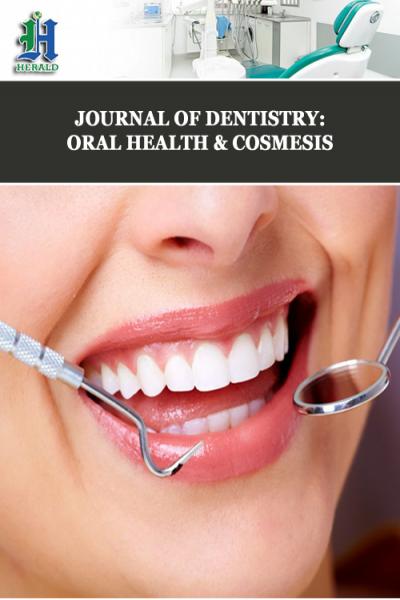
Brackets in Orthodontics
*Corresponding Author(s):
Sonal Suresh DhumalDepartment Of Orthodontics, Yogita Dental College And Hospital, Khed, India
Email:Sonaldhumal94@gmail.com
Abstract
Orthodontic brackets are an integral part of traditional braces and act like handles that hold the arch wires that move teeth.
There are various types of brackets available, according to the evolution of brackets and composition of brackets, types of locking mechanism.
Earlier appliance fabricated with gold alloys were used, metallic plate with ligature wires to bring teeth into occlusion to recent advances of customised brackets with cadcam machine are been fabricated.
Metallic brackets can be further categorized into stainless steel, non’nickel or low’nickel stainless steel, and titanium brackets.
Ceramic brackets are developed for esthetic purposes. Other esthetic materials have also been used—for example, plastics and polycarbonate-based materials.
There are recent advances in the brackets but it is important to know the evolution of the brackets from past to present. Recent advances are seen self-ligating brackets, lingual brackets and customised brackets, clear brackets are seen.
Introduction
From the inception of fixed-appliance orthodontic treatment, brackets traditionally have been welded to gold or stainless steel bands [1].
As early as 1000 BC attempts have been made to treat malocclusions [2]. Appliances to move teeth have been found in Greek and Etruscan excavations.
Aulius Cornelius Celsus (25 BC – 50 AD) advocated the use of finger pressure to align the teeth as active treatment for correction of malocclusion.
Orthodontic brackets have evolved from Angle's era to the MBT brackets followed by lingual brackets. These brackets have made the life of the orthodontists much easier [3]. As technology advances many more new materials and designs will be coming forward [3].
The purpose of this article was to review the recent advancements in orthodontic brackets and how the science behind them helps the orthodontist in the day to day practice [3].
Classification Of Orthodontic Brackets
I) Based on the attachment to the tooth surface:
- Weldable
- Bondable
- Laminated mesh
- Regular
- Mini
- Open mesh
- Porous powder
- Honey comb – microlock
- Chemically treated
II) Based on material constituent:
- Stainless steel
- Polycarbonate
- Fiber glass reinforced
- Ceramic
- Alumina based
- Monocrystalline
- Polycrystalline
- Zirconia based brackets
- Titanium brackets
- Magnetic brackets
- Cobalt-chromium brackets
- Composite brackets
III) Based on technique:
- Begg light wire bracket
- Edgewise bracket
- Straight wire bracket
- Brackets used in combination technique
- Universal bracket
- Twin wire bracket
- Brackets used in BEDDTIOT
- Tip-Edge bracket
- Brackets used in Vari-Simplex Discipline
- Brackets used in lingual orthodontics
IV) Based on bracket arch wire contact:
- Ligating brackets
- Selflsigating brackets
- Swirl lock bracket
- Ford lock bracket
- Slide pin bracket
- Russel lock bracket
- Edge lock bracket
- Speed bracket
- Activa bracket
V) Based on bracket manufacturing process [4]:
- Milled bracket
- Casted bracket
- Moulded and sintered bracket
Pierre Fauchard, a French physician in 1798 made the first attempt to move teeth. This appliance consists of a flat strip of metal, pierced with suitable holes to pass the wires to be tied around the crooked tooth. The metal strip was formed into an arch type which concurrently applied force after tying (Figure 1). Anchorage employed was simple anchorage and simple tipping movement was possible [5].
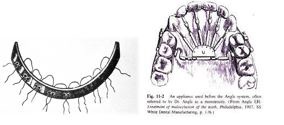 Figure 1: An appliance used before the Angle System, often referred to by Dr. Angle as a monstrocity.
Figure 1: An appliance used before the Angle System, often referred to by Dr. Angle as a monstrocity.
In 1847, in New York, Dwinelle invented the regulating jack screw.
It delivered a pushing force on the teeth, which was later improved by Dr. Edward Hartley Angle to increase the range of action. During this time Angle developed the regulating retraction screw (Figures 2 & 3).
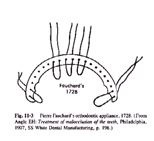 Figure 2: Dr. Pierre Fauchard's orthodontic appliance, 1782.
Figure 2: Dr. Pierre Fauchard's orthodontic appliance, 1782.
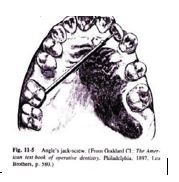 Figure 3: Angle's jack-screw.
Figure 3: Angle's jack-screw.
In 1887, Angle developed the prototype of the first bracket attachment (a delicate metal tube soldered to the band).
Angle Developed Four Major Appliance Systems
- The E Arch Appliance (1907) [5]
In the late 1800s, a typical orthodontic appliance depended upon some sort of a rigid framework to which the teeth were tied so that they could be expanded to the arch form dictated by the appliance (Figure 4). The E- Arch which was introduced in 1887, was a modification of this basic design.
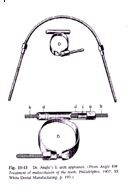 Figure 4: Dr. Angle's E arch applance (From Angle EH Treatment of malocclusion of the teeth. Philadelphia 1907 SS White Dental Manufacturing)
Figure 4: Dr. Angle's E arch applance (From Angle EH Treatment of malocclusion of the teeth. Philadelphia 1907 SS White Dental Manufacturing)
Types of E- arch appliance:
- Basic E-arch: Used in the mandible with Bakers anchorage.
- Ribbed E-arch (Figure 5): Used in expansion by tying brass ligatures to the arch.
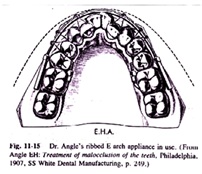 Figure 5: Dr. Angle's ribbed E arch appliance in use.
Figure 5: Dr. Angle's ribbed E arch appliance in use.
c. E- arch without threaded ends: This fits into the molar sheaths with an attached ball for the high pull head gear in the incisor area (Figure 6).
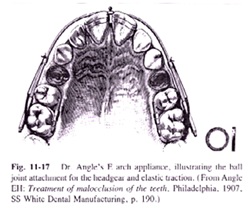 Figure 6: Dr. Angle's E arch appliance, illustrating the hall joint attachment for the headgear and clastic traction.
Figure 6: Dr. Angle's E arch appliance, illustrating the hall joint attachment for the headgear and clastic traction.
d. E-arch with hooks: These are used in the maxilla. The entire maxillary dentition was moved distally and the mandibular dentition was moved mesially by the action of inter maxillary elastics (Figure 7).
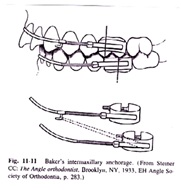 Figure 7: Baker's intermaxillary anchorage.
Figure 7: Baker's intermaxillary anchorage.
- Pin and Tube Appliance (1910) [5]
This was the first appliance that employed a bracket and used bands on most of teeth (Figure 8).
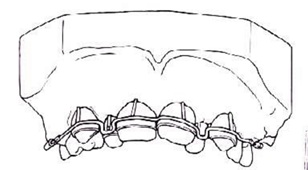 Figure 8: Pin & Tube appliance.
Figure 8: Pin & Tube appliance.
- Ribbon Arch Appliance (1915) [5]
Modified the tube on each tooth to provide a vertically positioned rectangular slot behind the tube. This appliance was introduced in 1915 due to difficulty in the use of pin and tube appliance. It was actually the first bracket, as such, to be used in an orthodontic appliance (Figure 9).
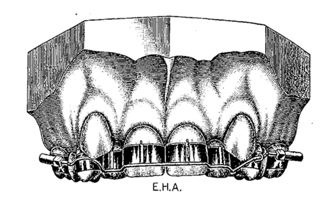 Figure 9: Ribbon arch appliance.
Figure 9: Ribbon arch appliance.
- The Edge Wise Appliance [5] (Figure 10)
The original edgewise bracket as designed by Angle was made of soft gold with a 0.022x0.028 inch slot that was readily deformed by the forces of occlusion and by tying ligature wires to the bracket [6,7].
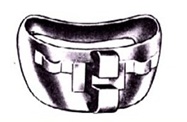 Figure 10: Edge wise appliance.
Figure 10: Edge wise appliance.
Two Separate Brackets on a Single Tooth [8]: The next step in the development of the present day edge wise bracket began with the use of the two brackets on a single tooth spaced in a way that they would effect rotation of the tooth.
Twin Brackets [8]: The next step in the development was joining together of the two edgewise brackets on a common base (Figure 11, Figure 12).
The success of the early Siamese twin bracket led to the development of Siamese twin brackets that were not as wide as the original and were termed as the twin brackets [9-11].
Basically there are four sizes of twin brackets:
- Extra wide
- Standard
- Intermediate
- Junior
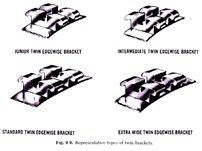 Figure 11: Representative types of twin brackets.
Figure 11: Representative types of twin brackets.
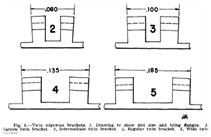 Figure 12: Twin edgewise brackets. 1. Drawing to show a lot size and tying manages. 2. Narrow twin bracket. 3. Intermediate twin bracket. 4. Regular twin bracket 5. Wide twin bracket.
Figure 12: Twin edgewise brackets. 1. Drawing to show a lot size and tying manages. 2. Narrow twin bracket. 3. Intermediate twin bracket. 4. Regular twin bracket 5. Wide twin bracket.
Posterior Bracket [8]: Another early development was the evolution of a solid bracket that was approximately twice as wide as the original edgewise bracket called a posterior bracket (Figure 13, Figure 14).
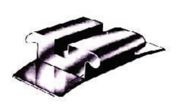 Figure 13: Posterior or wide width single bracket.
Figure 13: Posterior or wide width single bracket.
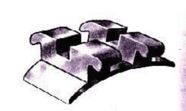 Figure 14: Curved base twin bracket. Conforms to the brackets surfaces of canines and premolars.
Figure 14: Curved base twin bracket. Conforms to the brackets surfaces of canines and premolars.
Lewis Bracket [8]: During the development of twin brackets, another approach to the problem of efficient tooth rotation was developed by Dr. Paul D Lewis, who soldered auxiliary rotation arms that abutted against the bracket itself and thus offered a lever arm to deflect the arch wire and rotate the tooth (Figure 15).
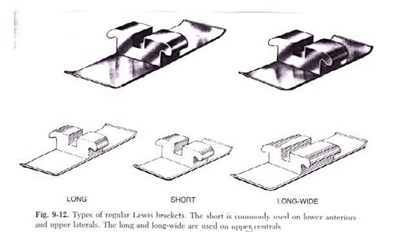 Figure 15: Types of regular Lewis brackets. The short is commonly used on lower anteriors and upper laterals. The long and long-wide are used on upper centrals.
Figure 15: Types of regular Lewis brackets. The short is commonly used on lower anteriors and upper laterals. The long and long-wide are used on upper centrals.
Curved Base Lewis Bracket [8]: This involved the curving of the base and wings of the bracket to conform to the canine and premolar teeth (Figure 16).
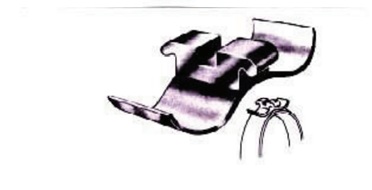 Figure 16: Curved base Lewis bracket.
Figure 16: Curved base Lewis bracket.
Steiner Bracket [8]: This was introduced shortly after the Lewis bracket and was designed by Cecil Steiner. These bracket incorporated flexible rotational arms and therefore did not depend entirely on the resiliency of the archwire for tooth rotation. Steiner bracket utilizes a single width edge wise bracket and therefore has the inherent advantage and disadvantage of this type of appliance.
Broussard Bracket [8]: Designed by Garford Broussard for use in the Broussard technique. Modification of the edgewise bracket in which there has been the addition of a 0.0185x0.046 inch vertical slot to accept a doubled 0.018 inch auxiliary wire (Figure 17).
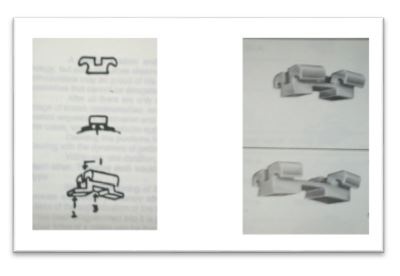 Figure 17: Broussard bracket.
Figure 17: Broussard bracket.
Brustone Cuspid Bracket [12]: Consists of a basic 0.022 x 0.028 edgewise slot. Additional 0.017 x 0.025 vertical auxiliary tube placed gingivally for attachment of retraction springs. It was developed by Dr. Charles J. Burstone and Dr. James Baldwin in 1961.
The Universal Bracket [13]: The fundamental element is the Universal bracket, a combination of the edgewise principle and Angle's ribbon arch. This bracket gives the appliance control in three planes of space. This bracket seem.
The 3-D Universal Bracket [14]: The next step towards evolution was to design a bracket with such specifications and to submit it to clinical test to prove its performance (Figure 18).
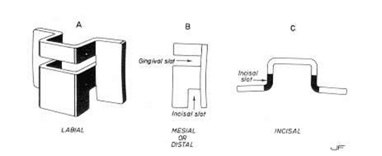 Figure 18: 3-D Universal bracket.
Figure 18: 3-D Universal bracket.
Bracket Modification by Ricketts [15]: Increased mechanical efficiency was desired over the staple, used in the original edgewise, for rotation correction. Ricketts designed a wide-flanged easy-tie 0.018" x 0.030" Siamese bracket for: 1. Ease of ligating 2. Uprighting access 3. Flexibility of the elastic attachment [16,17] (Figure 19).
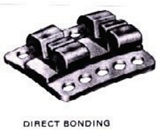 Figure 19: Direct bonding.
Figure 19: Direct bonding.
Beggs Bracket [18]: The Begg technique was introduced by Dr. Percival Raymond Begg [19,20] (Figure 20). Begg studied and worked with Angle from 1924-25.
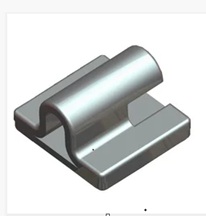 Figure 20: Beggs bracket.
Figure 20: Beggs bracket.
The Beddtiot Applaince [21]: The appliance system known as the Begg-edgewise diagnosis-determined totally individualized orthodontic technique (BEDDTIOT) offers the capacity to employ selected principles and features of Begg and edgewise mechanisms in specific situations in which they are most advantageous.
The brackets are narrow, single-width (0.050 inch or 1.3 mm) edgewise brackets with 0.022 inch (height) and 0.028 inch (faciolingual depth) horizontal arch wire slots [22,23] (Figure 21).
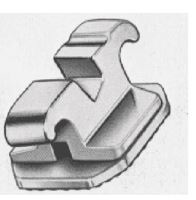 Figure 21: Beddtiot bracket on universal bonding pad.
Figure 21: Beddtiot bracket on universal bonding pad.
Tip-Edge Bracket [24]: Personal clinical experience and results of a study done in 1968 led Dr. P.C. Kesling to conclude that differential tooth movement (crown tipping followed by controlled root uprighting) requires that each tooth tip freely either mesially or distally B not in both directions (Figure 22, Figure 23).
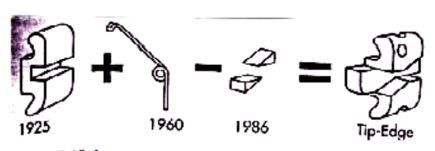 Figure 22: Invention of the edgewise bracket by E.H. Angle in 1925 plus the uprighting spring of P.R. Begg in 1960 minus two diagonally up-posed corners of the archwise slot by P.C. Kesling in 1986 equal the Tip-Edge bracket of today.
Figure 22: Invention of the edgewise bracket by E.H. Angle in 1925 plus the uprighting spring of P.R. Begg in 1960 minus two diagonally up-posed corners of the archwise slot by P.C. Kesling in 1986 equal the Tip-Edge bracket of today.
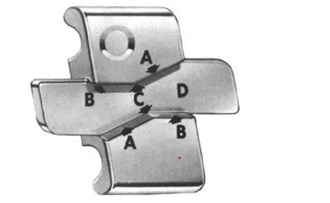 Figure 23: Tip-edge bracket.
Figure 23: Tip-edge bracket.
A-Crown tipping control surfaces
B- Root uprighting control surfaces
C- Vertical and torque control central ridges or pivots
D- Rotational control surfaces or wings
Refined Begg Technique [21]: This technique was introduced by Dr. V. P. Jayade.
The brackets used are TP-256-000, or any other having a similar design and dimensions.
The dimensions of the bracket base are 3mm x 3mm (Figure 24).
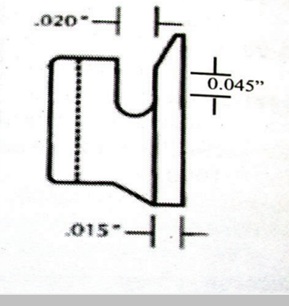 Figure 24: Refined Begg Technique.
Figure 24: Refined Begg Technique.
Begg/Chun-Hoon Combination Bracket Technique [25]: This technique was introduced in early 1960 (Figure 25). The essential features of both the light wire and edgewise techniques. This versatile combination bracket can be used interchangeably with both techniques. Available in regular and curved bases [26,27].
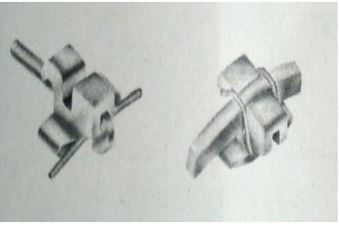 Figure 25: Begg/Chun-Hoon combination bracket.
Figure 25: Begg/Chun-Hoon combination bracket.
Modern Begg: A Combination of Begg And Straight Wire Appliances And Techniques [25]: Introduced by Dr. William J. Thompson in 1981 (Figure 26, Figure 27).
COMBINATION ANCHORAGE TECHNIQUE (CAT) BRACKET DESIGN [25]
It has a 0.022 x 0.035-inch gingival or ribbon arch slot and either a 0.018 x 0.025- inch or 0.022 x 0.028-inch straight wire edgewise slot.
 Figure 26: Design of CAT.
Figure 26: Design of CAT.
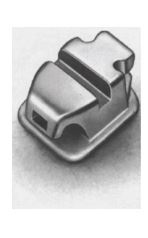 Figure 27: Combination Anchorage Technique.
Figure 27: Combination Anchorage Technique.
Bioefficient Therapy-Anthony D. Viazis (1995) [28]
- Modification of preadjusted system.
- Multifunctional single bracket for Bioefficient Therapy (Figure 28)
- The bracket prescriptions were designed to overcorrect malocclusion and to make it possible to work with the largest possible wires from the start of the treatment [29,30].
 Figure 28: Multifunctional single bracket for Bioefficient Therapy.
Figure 28: Multifunctional single bracket for Bioefficient Therapy.
Mclaughlin, Bennett and Trevisi System- 1998 [31] (Figure 29)
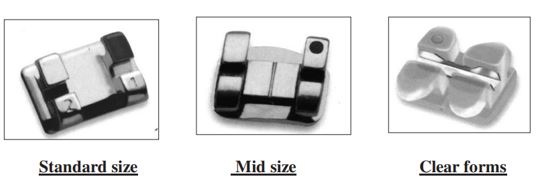 Figure 29: Brackets were available in standard size metal, mid-size metal, clear forms.
Figure 29: Brackets were available in standard size metal, mid-size metal, clear forms.
McLaughlin and Bennett worked with Trevisi to re-design the entire bracket system to complement their proven treatment philosophy and to overcome the perceived inadequacies of the original SWA [32,33].
Butterfly System [34]
Dr.Bowman and Dr.Carano in 2004
Low profile brackets (17% smaller in dimensions)
Miniature twin-wing design and rounded tie wings (Figure 30).
Hooks are eliminated from all the brackets.
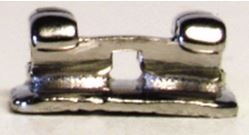 Figure 30: Butterfly system.
Figure 30: Butterfly system.
Lingual Orthodontic Appliances [35]: In 1975, Dr. Craven Kurz of Beverly Hills, California, became convinced that a lingual bonded edgewise appliance was feasible and would make a significant contribution to adult orthodontics.
Kurz Lingual Appliance: This was introduced by Dr. Craven Kurz in association with Ormco in 1982 (Figure 31).
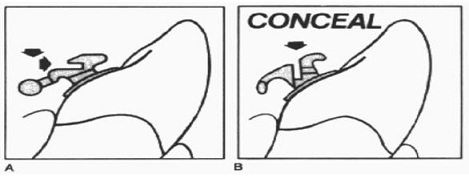 Figure 31: A- Lingual insertion, B-Occlusal insertion.
Figure 31: A- Lingual insertion, B-Occlusal insertion.
Self-Ligating Brackets [36]: The first patent for a self-ligating attachment, the Boyd band bracket, was filed by Charles. E. Boyd in 1933. Shortly thereafter James W. Ford filed a patent for the Ford Lock design, which was manufactured briefly by the Dee Gold Company of Chicago, Illinois (Figure 32). There are several generations or modifications of self-ligating brackets.
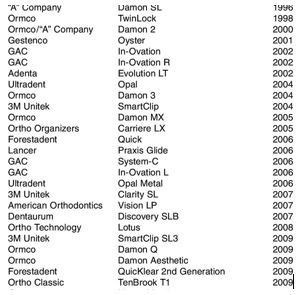 Figure 32: Manufactured briefly by the Dee Gold Company of Chicago, Illinois.
Figure 32: Manufactured briefly by the Dee Gold Company of Chicago, Illinois.
Speed Bracket System [36]: The SPEED appliance system was developed by Dr. Herbert .G. Hanson in 1975 and introduced in 1980. Hanson in 1975, combined Angle's edgewise appliance with his own concept of developing both a dynamic and selfligating appliance.
Time Bracket [36]: The Time bracket was introduced by Dr. Wolfgang Heiser, Austria in 1995.
About the size of the conventional bracket, the Time bracket features a curved, rigid arm that wraps occlusogingivally around the labial of the bracket body (Figure 33).
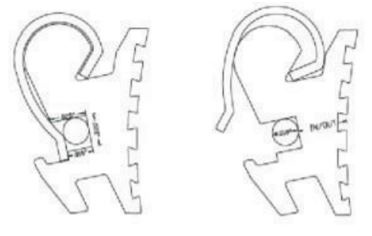
Figure 33: Schematic drawing of the Time bracket.
Damon Sl Bracket [36]: The Damon SL bracket was introduced by Dr. Dwight H. Damon in 1996. Design Criteria for the Damon SL Bracket (Figure 34).
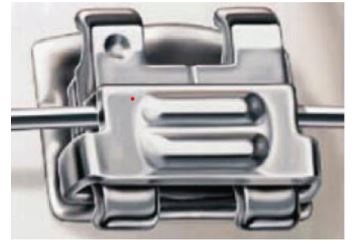 Figure 34: Damon SL bracket.
Figure 34: Damon SL bracket.
Smart Clip Brackets: The smart-clip brackets (3M unitek 3M Center, St. Paul, MN55144-1000) retains the wire by two C-shaped spring clips on either side of the bracket slots [37,38] (Figure 35).
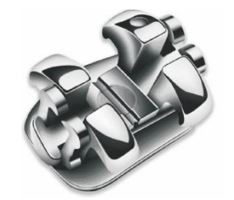 Figure 35: Smartclip bracket.
Figure 35: Smartclip bracket.
Conclusion
This article summarises various types of brackets and its evolution .When we look back in years in orthodontics, dramatic changes have been noticed from weldable bands to clear removable clear aligners for orthodontic tooth movement. As the technology advances, new appliance will take their place [39,40]. Demand for new appliance also depends mostly on the patient compliance. Orthodontist should wisely select the type of prescription depending on the case.
References
- Graber TM (1972) Orthodontics Principles and Practice. WB Saunders Company: 953.
- Asbell MB (1990) A brief history of orthodontics. Am J Orthod Dentofacial Orthop 98: 206-213.
- Kakadiya A, Tandon R, Azam A, Kulshrestha R, Bhardwaj M (2017) Recent advancements in orthodontic brackets - A review. SM Dentistry Journal 3: 1-8.
- Eliades T, Brantley W(2007) Orthodontic brackets, Orthodontic Materials. International Edn:144-161.
- Graber TM, Vanarsdall RL (1994) Orthodontics Current Principles and Techniques. Mosby Company.
- Angle EH (1929) The latest and best in orthodontic mechanism. SS White Dental Manufacturing Co 71.
- Holdaway RA (1952) Bracket angulation as applied to the edgewise appliance. Angle Orthod 22: 227-236.
- Graber TM, Swain BF (1985) Orthodontics Current Principles and Techniques. Mosby Company.
- Andrews LF (1972) The six keys to normal occlusion. Am J Orthod 62: 296-309.
- Andrews LF (1976) The Straight-Wire Appliance, Origin, Controversy, Commentary. J Clinical Orthod 10: 99-114.
- Andrews LF (1976) The Straight-Wire Appliance: Explained and Compared. J Clinical Orthod 10: 174-195.
- Burstone CJ, Hanley KJ, Steenbergen EV (1995) Modern Edgewise Mechanics and the Segmented Arch Technique. Famington 1.
- Fastlicht J (1969) The Universal Appliance Today- Part I. J Clinical Orthod: 582-589.
- Fastlicht J (1974) The 3-D Universal Bracket. J Clinical Orthod: 149-159.
- Ricketts RM (1976) Bioprogressive therapy as an answer to orthodontic needs. Part I. Am J Orthod 70: 241-268.
- Roth RH (1976) Five-Year Clinical Evaluation of the Andrews StraightWire Appliance. J Clinical Orthod 10: 836-850.
- Roth RH (1987) The Straight-Wire Appliance -17 Years Later. J Clinical Orthod: 632-642.
- Johnston LE (1985) New Vistas in Orthodontics. Lea and Febiger: 347.
- Jarabak JR,Fizzell (1963) Technique and treatment with the light wire Edgewise appliance. CV Mosby Company: 750.
- Andrews LF (1989) Straight Wire: The Concept and Appliance. L A Wells co: 1-406.
- Swain BF, Ackerman JL (1969) An evaluation of the Begg technique. American Journal of Orthodontics 55: 668-687.
- Shepard EE (1961) Technique and Treatment with the Twin Wire Appliance. Mosby: 157.
- Johnson JE (1976) Adaptability of the Twin-Wire Appliance to Modern Day Orthodontics. J Clinical Orthod 10: 546-555.
- Parkhouse RC (2007) Current products and practice: Tip-Edge Plus. J Orthod 34: 59-68.
- Fogel MS, Magill JM (1963) The combination technique: A system of controlled light-wire therapy. American Journal of Orthodontics 49: 801-825.
- Brandts (1996) Brandt Torqueontrol System. Dentaurum. W Germany.
- Schudy GF (1990) Bracket Design and Wire Flexibility. J Clinical Orthod 24: 106-114.
- Viazis AD (1995) Bioefficient therapy. Journal of clinical orthodontics 29: 552-568.
- Alexandar RG (1983) The Vari-Simplex Discipline: Part 1 - Concept and Appliance Design. J Clinical Orthod 17: 380-392.
- Viazis AD (1995) Bioefficient Therapy J Clinical Orthod 29: 552-568.
- Benett JC, McLaughlin RP, Trevisi HJ (2001) Systemised Orthodontic Treatment Mechanics. Mosby: 1-312.
- Benett JC, McLaughlin RP (1994) Orthodontic Treatment Mechanics and the Preadjusted Appliance. Wolfe Publishing: 1-241.
- Benett JC, McLaughlin RP (1997) Orthodontic Management of the Dentition with the Preadjusted Appliance. Mosby: 1-380.
- Bowman SJ, Carano A (2004) The Butterfly System. Journal of clinical orthodontics 38: 274-287.
- AJODO (1998) Contemporary lingual orthodontics: Principles and techniques. AJODO 114: 150.
- Mathur P, Tandon R, Chandra P, Dhingra R, Singh P (2021) Self ligating brackets: from past to present. IP Indian journal of orthodontics and dentofacial research 7: 216-222.
- Agrawal I, Mehta F, Patel R, Trivedi R, Keerthana SJ (2020) Orthodontics Brackets Form Past to Present. International journal of creative research thoughts 8: 1-11.
- Khatri JM, Sawant SS, Naidu NR, Vispute SS (2020) An update on orthodontic brackets- A review. International Journal of orthodontics Rehabilitation 11: 136.
- Creekmore TD (1973) The New Torqued Appliance. J Clinical Orthod 7: 553-562.
- Andreiko C (1994) JCO Interviews on the Elan and Orthos Systems. J Clinical Orthod 28: 459-468.
Citation: Dhumal SS, Patil C, Kawale P, Sonone T, Joshua B, et al. (2023) Brackets in Orthodontics. J Dent Oral Health Cosmesis 8:20
Copyright: © 2023 Chetan Patil, et al. This is an open-access article distributed under the terms of the Creative Commons Attribution License, which permits unrestricted use, distribution, and reproduction in any medium, provided the original author and source are credited.

